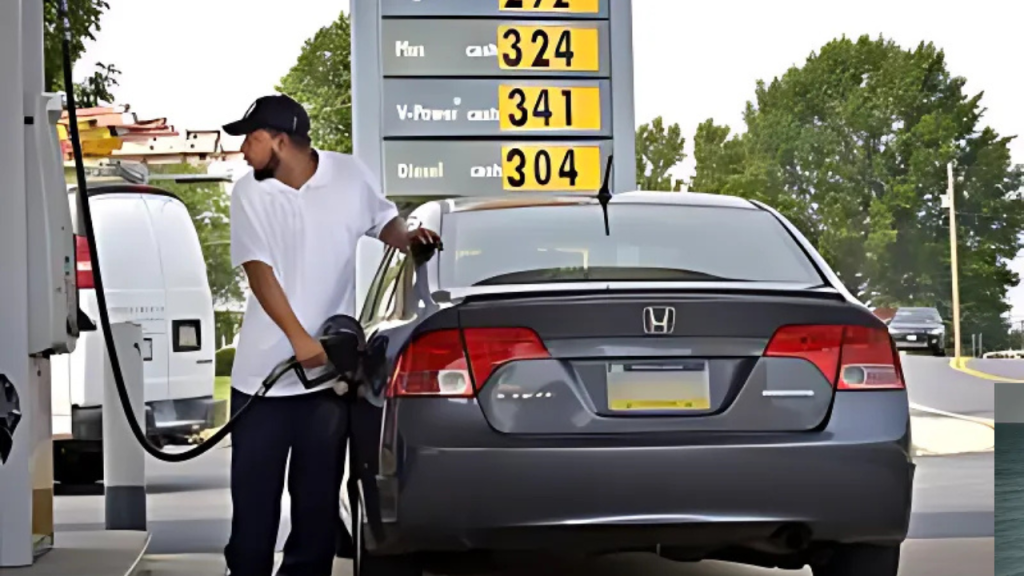
Gas prices across the United States are steadily declining, with many states seeing the lowest rates at the pump in months. According to data from AAA and various local reports, the national average for a gallon of regular gasoline has dropped to $3.14 as of June 2, 2025—down 3 cents from the previous week and nearly 40 cents less than the same time last year.
This trend is being welcomed by consumers as travel season ramps up, and it reflects broader economic and global oil supply changes.
Price Drops by State
Michigan:
Motorists in Michigan are enjoying a significant price drop, with the average cost per gallon now at $3.08. That marks a 13-cent decrease from last week and a 48-cent decline compared to a year ago. According to AAA Michigan, this is one of the steepest weekly drops seen in recent months, providing much-needed relief to drivers in the state.
Wisconsin:
In Wisconsin, gas prices have fallen below the $3 mark. Drivers are now paying around $2.97 per gallon on average, about 7 cents less than the previous week and 36 cents cheaper year-over-year. Reports from Civic Media indicate that this decline aligns with a nationwide pattern of easing fuel costs.
Alabama:
Alabama remains one of the states with the lowest gas prices in the country. The current average stands at $2.73 per gallon, according to AAA Alabama. This represents a drop of 46 cents from the same period last year, making travel more affordable for residents across the state.
Wyoming:
In Campbell County, Wyoming, gas prices fell another 7 cents last week, contributing to a 17-cent decline over the past two weeks. The statewide average also reflects this downward trend, in line with the national decrease.

Why Are Prices Falling?
Several key factors are contributing to the ongoing drop in gas prices:
1. Lower Crude Oil Prices:
The price of crude oil, which directly affects gasoline costs, has dropped significantly. West Texas Intermediate (WTI) crude is now trading below $70 per barrel. This decline is attributed to increased global oil production, reduced demand forecasts, and fears of slower economic growth.
2. Increased Global Supply:
OPEC+ recently announced plans to boost oil output through May and June, adding millions of barrels per day to the global market. This increase in supply has helped stabilize and push down fuel prices across importing nations like the U.S.
3. Seasonal Market Shift:
While gas prices typically rise during spring and summer due to heightened travel demand, 2025 has seen the opposite. Despite the start of the summer travel season, prices continue to fall—defying the usual pattern. Analysts attribute this to strong refinery output and mild consumer demand compared to projections.
What Does This Mean for Drivers?
For everyday drivers, this drop offers financial relief, especially during a time of rising costs in other areas like groceries and housing. Cheaper gas also encourages more road trips and domestic travel, boosting local economies that rely on tourism.
According to AAA’s official gas price tracking page, this national average could continue to drop if crude oil remains steady or falls further. However, analysts also warn that unforeseen events such as refinery outages or international supply disruptions could cause prices to rise again.
Government Monitoring and Support
The U.S. Department of Energy, through its Energy Information Administration (EIA), regularly monitors gasoline trends and issues weekly updates. Their latest data supports the trend of lower retail gasoline prices driven by both domestic refinery performance and international oil markets.
The Federal Trade Commission (FTC) also keeps an eye on market behavior, ensuring there is no price manipulation that could artificially affect what consumers pay at the pump.
As gas prices continue to move downward, Americans are cautiously optimistic. For now, the declining numbers are offering some breathing room as the country heads into the peak of summer driving season.
